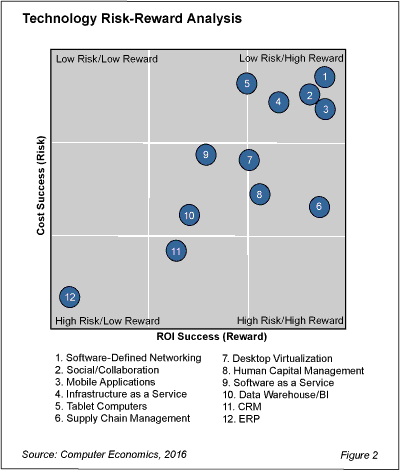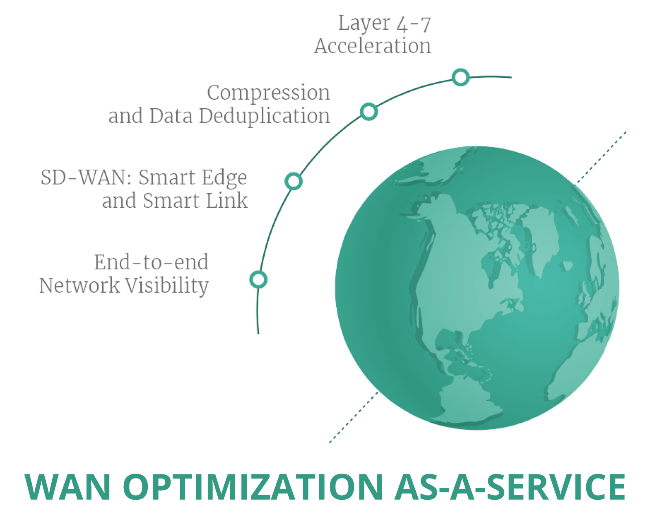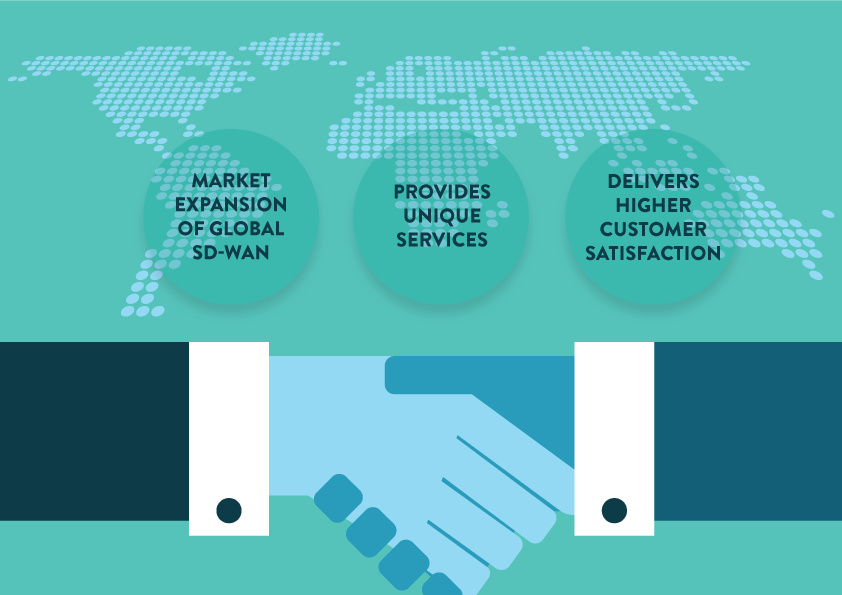SD-WAN: WHY APPLICATION PERFORMANCE IS STILL AT RISK
In January this year, thousands of IT managers descended upon Ft. Lauderdale to attend the NFV & SDN Expo. Everywhere I looked, people were talking about one thing: how software-defined networking (SDN) technology is going to transform the way that IT teams deploy, use, and manage their corporate network. And it didn’t come as a surprise. SDN has been buzzing over the wire for a while, and it’s now clearly beginning to hit its stride.
Software-Defined Networking: Low Risk – High Reward
This popularity wave is backed by many research reports too, that point to the fact that many global IT teams today are embracing the technology in a big way.
 For example, The Data Center Journal (March 2016) just published the annual Technology Trends study, in which IT organizations ranked SDN as #1 in the list of top five technology investments for 2016.
For example, The Data Center Journal (March 2016) just published the annual Technology Trends study, in which IT organizations ranked SDN as #1 in the list of top five technology investments for 2016.
The study ranked 12 leading technologies by an overall risk -reward profile, and even though SDN is one of the study’s newest technologies, IT customers raved about the experience.
So, why are we at Aryaka looking at SDN so closely?
Because its principles are revolutionizing not just the datacenter, but also global wide area networks.
How Are SDN And SD-WAN Related?
SDN technology, essentially, was conceived for and utilized in large datacenter networks, where all higher-level control functions were wrested from the hardware, and handed to the software. This enabled greater flexibility and ease in configuring and managing networks.
Soon, these principles began to get applied outside the datacenter, in wide area networks (WANs) to form software-defined WANs, or SD-WANs. So, now, routers and switches at branch offices have a new job description — simply read and forward packets, based on rules programmed into the software.
This is a fundamental shift in how networks are designed, used and managed, and while its effect on global network deployments is significant, it’s not quite enough to address all enterprise connectivity challenges (more on this later).
So, Why Are Global Businesses Showing Interest?
Because there are 3 major trends today that are transforming the role that corporate networks play in delivering application performance and driving business execution:
- Growth of SaaS adoption persists. According to Gartner Group, over fifty percent of mission-critical apps will move to the cloud by 2018.
- Infrastructure-as-a-Service (IaaS) and Platform-as-a-Service (PaaS) adoption is also steeply rising. Gartner finds that global spending on Infrastructure-as-a-Service (IaaS) will grow at 29.1% CAGR from 2014 to 2019.
- Globalization continues. A common scenario? Headquarters in the US, manufacturing in China and Brazil, development in India and Eastern Europe, and design in France & Italy.
Shortfalls of the Network Connectivity Status Quo
And none of today’s well-established network technologies are up to the challenge of meeting the performance expectations of today’s global cloud-enabled businesses.
- Performance of SaaS applications/cloud services is poor when accessed over the public Internet, as enterprise traffic competes with large volumes of consumer traffic.
- WAN optimization controllers require significant capital investments, and are cumbersome to maintain and manage.
- MPLS is expensive, takes typically 60-120 days to deploy (much longer in certain geographies), and does not support optimization for SaaS/cloud connectivity.
To make matters worse, network inefficiencies tend to ripple across different departments, resulting in missed deadlines, execution challenges, lost revenue, and lost business opportunities.
Not an uncommon problem
Many of Aryaka’s customers experienced similar issues before deploying our Software-Defined Network Platform.
JAS Forwarding, for example, uses a SaaS application, CargoWise One, hosted in a Microsoft Azure datacenter, to run their core logistics business. When we first spoke to them, the public Internet was giving them trouble while accessing resources hosted in the cloud, leading to application performance issues. And when they evaluated alternative connectivity technologies like MPLS, they quickly realized that it wasn’t a fit for their cloud connectivity needs.
Bottom line? JAS Forwarding absolutely required a connectivity solution that not only delivers simplicity, but also enhances application performance, especially for cloud-hosted apps.
But, SD-WAN alone is not the answer
Some SD-WAN vendors do a good job of controlling the entry and exit of data on the network by channeling mission-critical traffic over dedicated bandwidth links like MPLS, and other less important traffic over the public Internet. That’s the most common use case of SD-WAN – the hybrid WAN.
But challenges such as latency and deployment times remain with hybrid WAN architectures, as they still rely on the congested public Internet for flexibility and rigid MPLS links for performance. So, in the end, application performance continues to be at risk.
Aryaka: SD-WAN + Global Private Network + WAN Optimization
 What’s unique about Aryaka’s software-defined WAN Optimization as-a-Service, is that it’s deployed over a global private network with in-built WAN optimization technology. Because of the private network, you benefit from end-to-end orchestration, control, and enterprise-grade connectivity. And with optimization and cloud acceleration in place, all your connectivity and application performance issues are resolved without having to depend on MPLS or the Internet.
What’s unique about Aryaka’s software-defined WAN Optimization as-a-Service, is that it’s deployed over a global private network with in-built WAN optimization technology. Because of the private network, you benefit from end-to-end orchestration, control, and enterprise-grade connectivity. And with optimization and cloud acceleration in place, all your connectivity and application performance issues are resolved without having to depend on MPLS or the Internet.
And that’s how the story goes for JAS Forwarding. On setting up Aryaka’s SD-WAN solution across 100+ global locations, they experienced faster application performance, and stable, consistent connectivity to mission-critical SaaS applications.
Mark Baker, CIO at JAS Forwarding had this to say:
“With Aryaka, not only were we able to improve the application performance significantly, but the fully-managed service was a huge sell for us as well. Now we had a reliable network with management built-in globally and support staff on demand. A simple, cost-effective solution with no maintenance or capital expenditure – Aryaka was the perfect answer to the challenge we faced.”
If you’re still not convinced, I invite you to test this technology out for yourself by signing up for a free trial today!
- Calypso improved Microsoft SharePoint and Exchange performance by up to 13x
- Bajaj Electricals Enhances VoIP and Web-Conferencing Application Performance
- ThoughtWorks Chooses Aryaka SmartConnect for Faster Application Performance
- Xactly Replaces MPLS, Achieves 6x Faster RDP Performance
- Schenck Process Deploys Unified, Global Network and Solves Global Application Performance Issues
- NVIDIA Experiences 80% Faster Application Performance
- Global Retailer Displaces MPLS to Achieve 20X Faster App Performance
- Enterprise Professional Services company Improves App Performance
- Here’s What No One Tells You About Application Performance
- SD-WAN Solutions for Office 365 Application Performance
- How Latency, Packet Loss, and Distance Kill Application Performance
- How SD-WAN Can Improve Office 365 Application Performance 20x
- SD-WAN Solutions for Office 365 Application Performance
- How to Improve Application Performance for the Remote and Mobile Workforce
- How SD-WAN Can Improve Application Performance for Global Enterprises
- Are SaaS Cloud Applications Slowing You Down?







